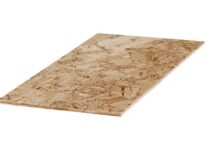When it comes to insulating your garage, selecting the appropriate R-value is not just about enhancing energy efficiency; it’s about creating a space that seamlessly combines comfort and functionality. In this comprehensive guide, I will navigate through the intricate of garage insulation, shedding light on the key factors that shape the recommended R-value for 2×4 garage walls.
Climate Zone and R-value

The geographical location of your residence significantly influences the insulation requirements for your garage walls. In regions with colder climates, a higher R-value is essential to counteract heat loss. Let’s delve deeper into the specifics of how climate impacts insulation needs.
Overview of Climate Impact
Understanding the climate characteristics of your area is the initial step in determining the most suitable R-value for your garage walls. For zones with moderate climates (Zones 3-5), a recommended R-13 or R-15 provides adequate insulation. In contrast, colder zones (Zone 6-8) necessitate a higher R-19 or above for optimal insulation and energy efficiency.
Garage Usage and R-value
The intended purpose of your garage is a pivotal factor in determining the appropriate R-value. Whether your garage serves as a heated workshop or an unheated storage space, the insulation requirements will vary.
Distinction between Heated and Unheated Garages:
For unheated garages used infrequently, insulation with an R-value of R-11 or R-13 may suffice. However, if your garage is regularly heated and used, aiming for an R-value of R-19 or higher becomes imperative to ensure optimal energy efficiency and comfort throughout the year.
Building Code Requirements
Local building codes are the backbone of safety and efficiency standards for insulation in your garage. Adhering to these codes is not just a legal obligation but a fundamental step in ensuring your space is both secure and well-insulated.
The Role of Local Building Codes
Before delving into insulation projects, take the time to familiarize yourself with your local building codes. These regulations often explicitly outline the minimum R-value requirements for garage walls. Meeting or surpassing these standards is not just about compliance; it’s about creating a space that is genuinely well-insulated and energy-efficient.
Budget Considerations
In any home improvement endeavor, budget constraints play a significant role. Balancing the desired R-value with financial considerations is a practical approach that ensures you make the most cost-effective choices.
Relationship Between Insulation R-value and Budget
It’s crucial to acknowledge that higher R-value insulation generally comes with a higher material cost. Consider your budget constraints and strike a balance that aligns with your insulation needs without putting undue strain on your finances. Finding this equilibrium ensures that your investment in insulation is both effective and economical.
Available Space and R-value
Understanding the limitations imposed by the depth of your 2×4 studs is pivotal in making informed decisions about insulation. Realistic choices can only be made when you grasp the constraints dictated by the available space.
Impact of 2×4 Stud Depth
Deeper studs, such as 2×6, present the opportunity for thicker and higher R-value insulation. Adjusting your choices based on the available space allows you to maximize the effectiveness of your insulation, taking full advantage of the deeper stud dimensions.
General Guide for Common Scenarios
To simplify the decision-making process, here’s a general guide that considers common scenarios and climate zones.
R-value Recommendations
- Moderate Climates (Zone 3-5): R-13 or R-15 is recommended.
- Colder Climates (Zone 6-8): R-19 or higher is preferred.
- Unheated Garage: R-11 or R-13 can be sufficient, but higher values offer better comfort if used occasionally.
- Heated Garage: Aim for R-19 or higher for optimal energy efficiency.
As we navigate through the intricacies of insulation considerations, it’s evident that a holistic approach, encompassing building codes, budget, available space, and climate, is necessary for making informed choices. Stay with us as we continue to unravel the nuances of selecting the right insulation for your 2×4 garage walls.
Additional Tips
Ensuring that your garage is well-insulated goes beyond choosing the right R-value; proper air sealing is crucial to maximizing insulation effectiveness. Consider the following additional tips to achieve a thoroughly insulated garage space.
Importance of Air Sealing
Properly sealing your garage is fundamental to enhancing the effectiveness of any chosen R-value. Gaps and cracks in the walls or around doors and windows can lead to heat loss, diminishing the overall insulation performance. Taking the time to seal these potential entry points ensures that your insulation efforts are not in vain.
Consider Additional Air Leakage Measures
In critical areas where air leakage is more prevalent, such as around windows or doors, consider incorporating measures like spray foam insulation. This type of insulation provides an additional barrier against air infiltration, contributing to a more airtight and energy-efficient garage.
For Deeper Studs (e.g., 2×6), Utilize Thicker Insulation
If your garage utilizes deeper studs, such as 2×6, take advantage of the extra space by using thicker and higher R-value insulation. This strategy ensures that you maximize the efficiency of your insulation, providing better thermal resistance and energy conservation.
Professional Consultation
While this guide offers valuable insights, seeking advice from local builders or insulation professionals is a prudent step in ensuring that your garage insulation is optimized.
Significance of Professional Advice
Local professionals possess a wealth of knowledge and experience specific to your region. They can provide personalized recommendations tailored to your individual needs and local building codes. Consultation with these experts ensures that you make informed decisions aligned with both your budget and the unique climate considerations of your location.
Conclusion
Choosing the right R-value for your 2×4 garage walls is a multifaceted decision that involves considering various factors. From climate and usage to budget and available space, informed decisions pave the way for an energy-efficient and comfortable garage space. Stay proactive, and you’ll reap the benefits of a well-insulated environment.
FAQs
What is the minimum R-value required for garage walls?
The minimum R-value depends on factors like climate and local building codes. Refer to your local codes for specific requirements.
Can I use lower R-values if my garage is not frequently used?
For infrequently used garages, lower R-values like R-11 or R-13 may be sufficient, but higher values offer better comfort.
Is air sealing really necessary when insulating garage walls?
Yes, proper air sealing is crucial to maximize the effectiveness of your chosen R-value. Sealing gaps and cracks prevents heat loss and ensures that the insulation performs optimally.
How do I know my climate zone for insulation purposes?
Check with local climate zone maps or consult with a professional to determine the climate zone in which your residence is located. This information is crucial for selecting the appropriate R-value.
Are there government incentives for higher R-value insulation?
Some regions offer incentives or rebates for energy-efficient home improvements, including insulation upgrades. Research local programs to potentially save on costs while enhancing your garage’s energy efficiency.


